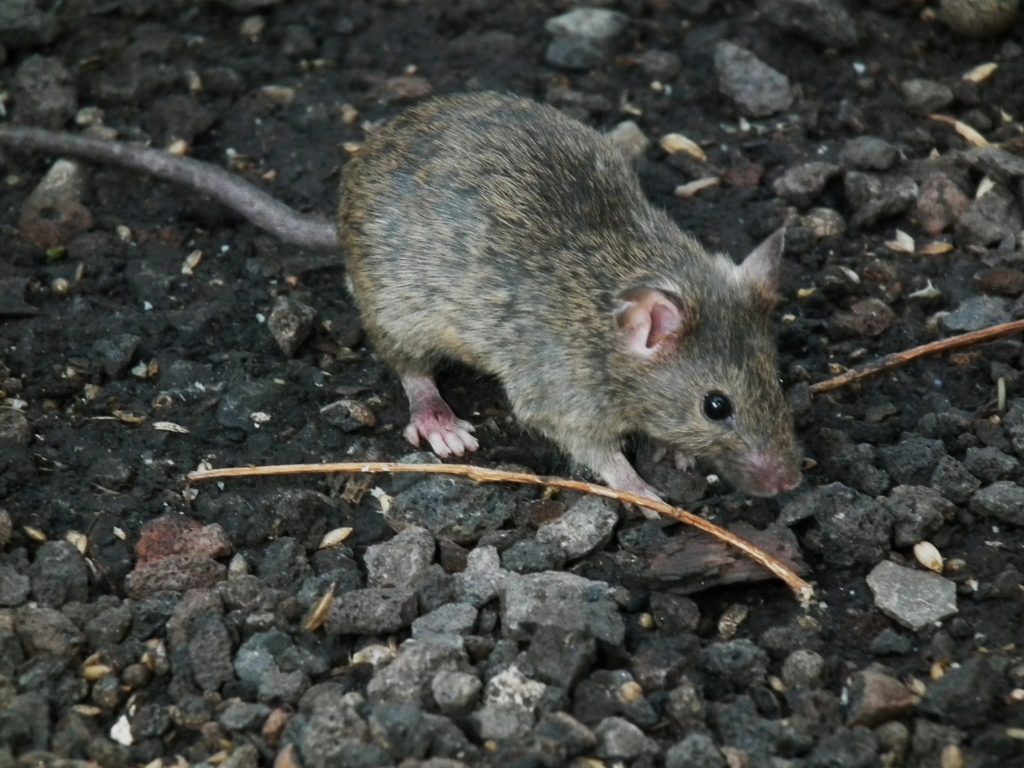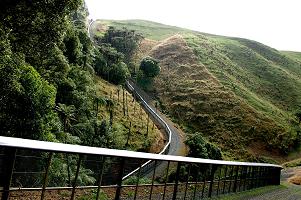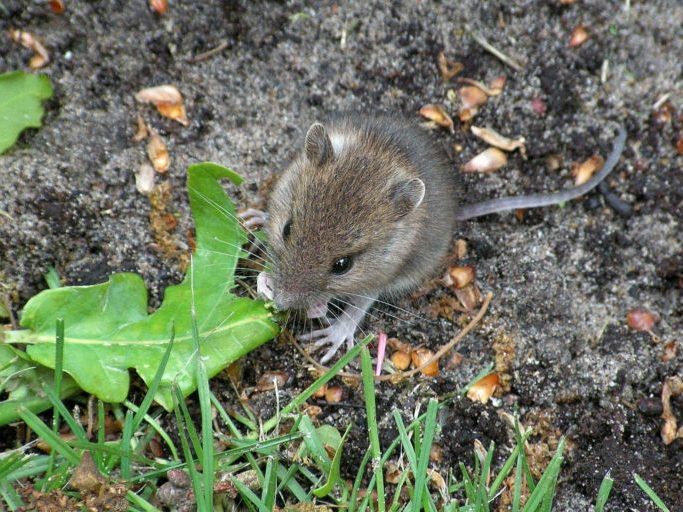House mice are the smallest mammal predators to have been introduced to Aotearoa/New Zealand since humans first arrived here around 1280AD. The mice arrived on European ships by the 1820s and nowadays they are present in most habitats throughout the country. Worldwide they are among the world’s most prevalent invasive mammals due to their rapid breeding, flexible diet and close association with humans.
If there’s a mouse in your kitchen you tend to notice, but in other habitats they can be fairly inconspicuous. Larger predators like cats, rats, stoats and weasels and competition for food from the likes of hedgehogs, keeps their numbers down. But once those predators and competitors are removed – in a fenced sanctuary for instance – any mice that remain suddenly have a free-for-all.

What’s more, mice are omnivores. They mostly eat seeds and invertebrates (not good news for forest biodiversity), but will also eat lizards, eggs and chicks on occasion. They’re easy to underestimate and tricky to eradicate.

So what happens to mouse populations in a fenced sanctuary – just how numerous can they get? That was the subject of a research project carried out by Landcare Research scientists Deborah Wilson, John Innes, Neil Fitzgerald, Scott Bartlam, Corinne Watts and Mark Smale. The results have just been published by the New Zealand Journal of Ecology and are freely available online.
“We studied the population dynamics of house mice for 5 years in the absence of other introduced mammals within mammal-resistant fences at a forested biodiversity sanctuary. We compared mouse population densities between two independently fenced sites, with contrasting levels of mouse management that were switched half-way through the study. We also assessed mouse demographic parameters (body condition, body size and reproductive condition) that could be affected by differences between sites and management treatments and could help to explain density variation.”
The research was carried out at the Maungatautari fenced sanctuary at Pukeatua, near Cambridge in the Waikato.
“The Maungatautari Ecological Island Trust (MEIT) enclosed Maungatautari with a mammal-resistant fence in August 2006. Most pest mammals were eradicated inside the fence in a prolonged operation that started in November 2006. Mice became very scarce but were probably never eradicated entirely from the reserve. Since February 2012 no further mouse control was attempted, and mice became increasingly abundant. An independent mammal-resistant fence was built in 2006 around a 17 hectare private forest block, covenanted to the Queen Elizabeth II National Trust and separated from the main Maungatautari reserve by a vehicle track. Mammals were eradicated from this block during the next 2 years, but mice apparently reinvaded and had become abundant again by 2011.”
The mouse study began in 2011 at two independently fenced blocks within the sanctuary with contrasting levels of mouse management.
“Our Q block study site, the 17 ha independently fenced private forest block had no mouse control and high mouse density at the beginning of the study. Our 24 ha M block (100 m north of Q block), received ongoing mouse control as part of the main fenced 3400 ha reserve; mice were undetectable there when this study began. Each site resembles a peninsula of forest partially surrounded by farmland. Midway through our study, in August 2013, we switched mouse management treatments between the two blocks, to assess experimentally how mouse abundance levels affect indigenous biota, in a related stud. MEIT eradicated mice from Q block, and in M block the remaining mouse control was withdrawn and the mouse population was allowed to increase.”
So just how high can mice numbers get when conditions allow? Worldwide there are a wide range of densities, from the mouse plagues of Australia to our own forest-masting and grassland masting events in New Zealand.
“In forests with other invasive mammals present on the New Zealand mainland, house mouse population density is usually < 6 mice per hectare, but can reach 50 per hectare after periodic high seedfall (masting) in forests dominated by masting tree species. The highest mouse population density estimate from the New Zealand mainland is 160 ha–1 in small forest patches surrounded by pasture and rank grass in the partially fenced biodiversity sanctuary on Tawharanui Peninsula, Auckland Region.”
The numbers can be much higher on subantarctic islands.
“On New Zealand islands lacking other terrestrial mammals density estimates are intermediate: up to 20 ha per hectare in forest, 70 per hectare in grassland–shrubland and 150 per hectare in subantarctic grasslan. In other ecosystems worldwide, house mouse population densities have been estimated as high as 150–500 per hectare on subantarctic islands lacking other terrestrial mammals.”
Compare those numbers, however, to mouse plagues in wheat-growing areas of south-eastern Australia where, after a good rainfall, possibly enhanced by reduced numbers of predators and disease, the density of mice can exceed an astounding 2000 per hectare. Fortunately, the mouse maximums recorded at Maungatautari were much more modest.

“The maximum mouse densities we recorded at Maungatautari (up to 46 per hectare in Q block and 23 per hectare in M block) were high when compared with most New Zealand forest ecosystems, but not with other ecosystems globally. The highest mouse densities were similar to estimates in New Zealand forest and alpine ecosystems after mass seeding (masting) events, but lower than estimates in another sanctuary and on some islands lacking larger terrestrial mammals.”
So for the mice at Maungatautari, even the removal of their normal predators and competitors didn’t allow a total free-for-all.
“We suggest that in the absence of competition and predation from other mammals, food limitation may have prevented mouse populations from attaining very high densities in this mainland forest location. Although predation and interspecific competition by larger mammals may limit mouse population size, food supply or other factors may become limiting as mouse density increases following mesopredator and competitive release. This effect has been demonstrated in grassland/shrubland habitat, where lack of mouse population growth after experimental removal of higher order mammalian predators was attributed to food limitation in locations with scarce grass seed. At Maungatautari, depletion of the supply of invertebrates as food for mice when mice became abundant in our study blocks may in turn have limited the mouse populations and prevented their continued increase to densities higher than those we observed.”
While it is good news that there wasn’t a total mouse population explosion, an increase in mouse numbers, even if modest by global comparison studies, is a problem for fenced sanctuaries for several reasons.
“In biodiversity sanctuaries they may have several additional negative consequences:
- First, mice may interfere with monitoring devices set to detect other species, in particular rats and mustelids, by stealing baits and obscuring footprints in tracking tunnels.
- Second, the extensive burrows created by house mice may provide conduits out of the sanctuary into adjacent mouse-free exclosures, and into the sanctuary for weasels or other predators.
- Finally, visible mice and their sign detract from the enjoyment by visitors and volunteers of sanctuaries that are expected to be pest-free.”
An increase in mouse numbers following top predator removal is also a potential consequence in other situations.
“House mouse populations are clearly often limited by predation and/or competition from other, larger pest mammals. However, the density of mice after removal of other mammals is likely to vary between locations, depending on food supply and whether any predatory mammals remain. For example, in managed urban areas it is possible that all wild and feral mammals may be removed but domestic cats remain. Therefore, given current support for Predator Free New Zealand it is worth studying whether control of larger mammals in urban and rural settings leads to mouse population irruptions.”
Sounds like a great research topic for some citizen science.
The full research report is published in the New Zealand Journal of Ecology and is freely available online.
Population dynamics of house mice without mammalian predators and competitors (2018)

